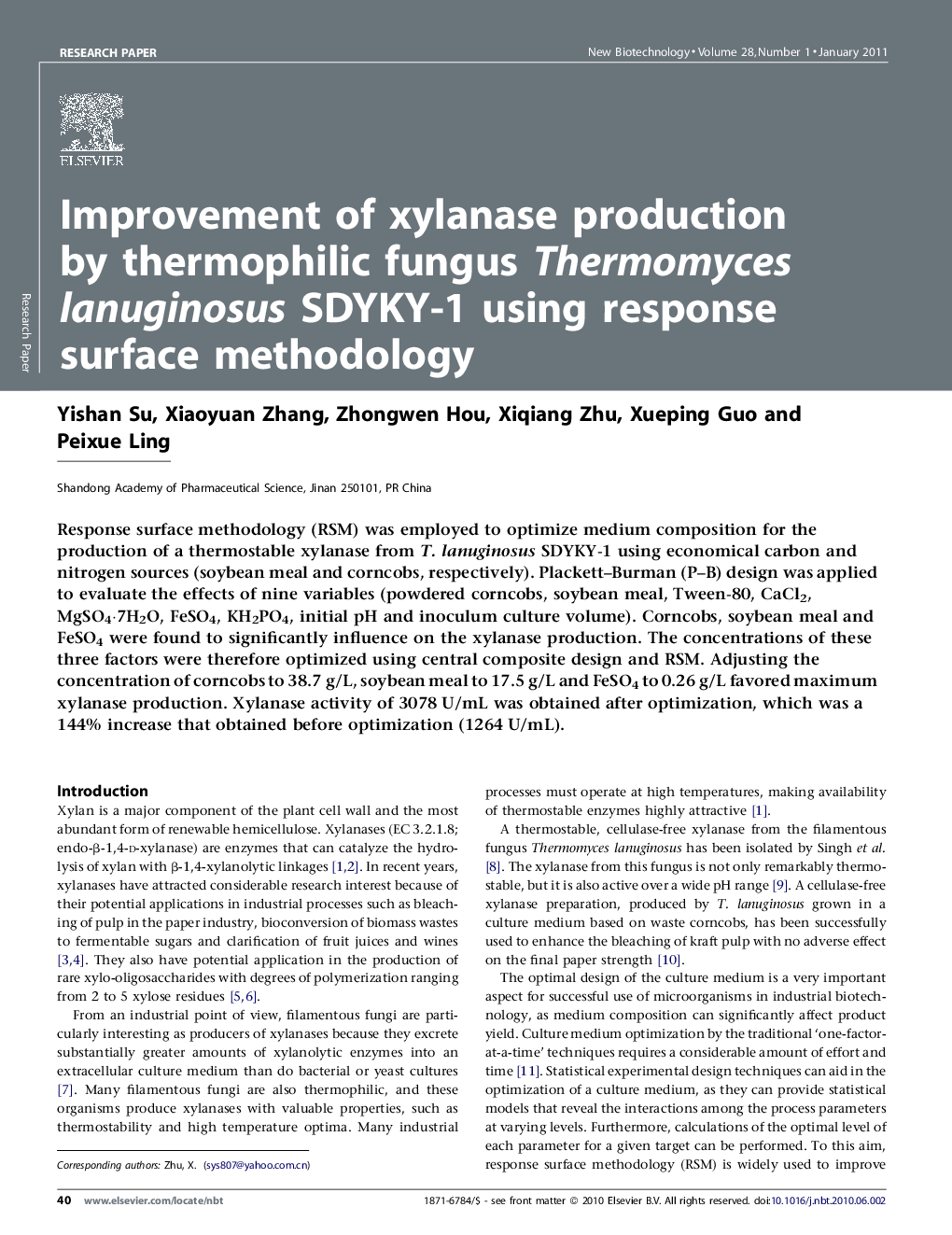| Article ID | Journal | Published Year | Pages | File Type |
|---|---|---|---|---|
| 33888 | New Biotechnology | 2011 | 7 Pages |
Response surface methodology (RSM) was employed to optimize medium composition for the production of a thermostable xylanase from T. lanuginosus SDYKY-1 using economical carbon and nitrogen sources (soybean meal and corncobs, respectively). Plackett–Burman (P–B) design was applied to evaluate the effects of nine variables (powdered corncobs, soybean meal, Tween-80, CaCl2, MgSO4·7H2O, FeSO4, KH2PO4, initial pH and inoculum culture volume). Corncobs, soybean meal and FeSO4 were found to significantly influence on the xylanase production. The concentrations of these three factors were therefore optimized using central composite design and RSM. Adjusting the concentration of corncobs to 38.7 g/L, soybean meal to 17.5 g/L and FeSO4 to 0.26 g/L favored maximum xylanase production. Xylanase activity of 3078 U/mL was obtained after optimization, which was a 144% increase that obtained before optimization (1264 U/mL).
